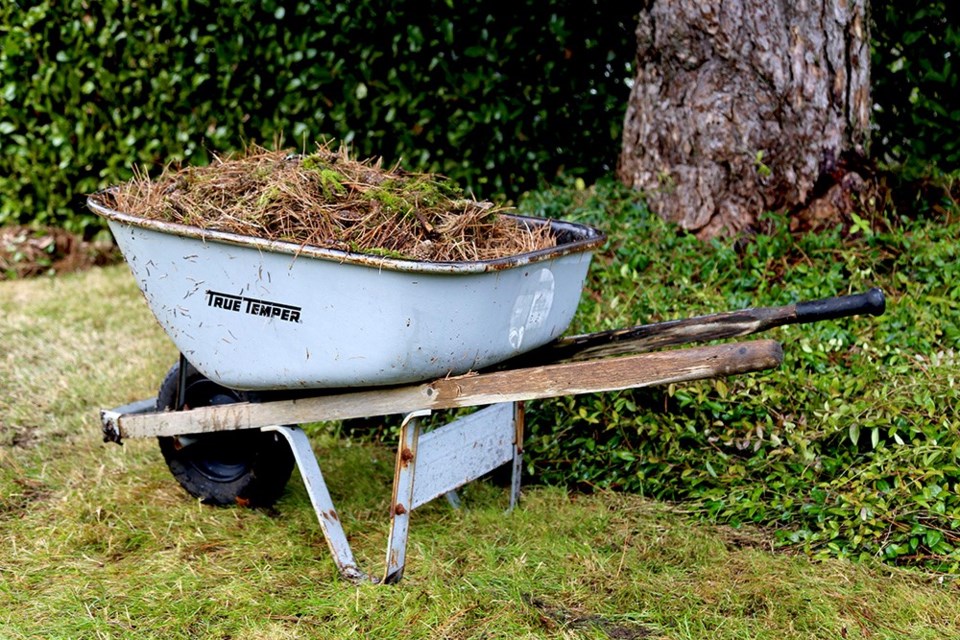The late great humanist, biologist, environmental theorist, author and philosopher E.O. Wilson wrote: “If all mankind were to disappear, the world would regenerate back to the rich state of equilibrium that existed ten thousand years ago. If insects were to vanish, the environment would collapse into chaos.”
Why we don’t embrace and act on that truism is a question for the ages, one that I have been considering to the point of preoccupation. Every food and habitat gardening, cooking and preserving thought that comes into my head these days makes a troubling and hugely inconvenient trip back to the bug baseline of the web of life that exists (or doesn’t) in our urban landscapes.
The deeper I dig into all things permaculture, bio-mimicry and self-regulating natural systems, the more truth I learn about the interconnected, interdependent nature of things, and the fragility of our future as a species.
That thing that differentiates us from all other species in all other kingdoms — that thing that makes us "superior" supposedly, is the very thing that not only drove us to the brink, but also prevents us from racing back without hesitation.
Call it ego perhaps, or greed, or perpetual dissatisfaction with any and all things. I’d call it selfish but that wouldn’t be an accurate judgment of the well-meaning legions who are merely misinformed and misled — who lack the information and opportunity to course-correct.
I find myself in a situation of discomfort currently, after taking a decision to get my bug baseline in order, or start to, at least.
After reading Nature’s Best Hope by American entomologist, ecologist, conservationist and author Douglas W. Tallamy, I was reminded painfully and repeatedly that, over the course of an evolutionary blink of an eye, non-Indigenous cultures have all but decimated natural ecosystems the world over, and that mankind is but another blink away from extinction.
While it is tempting to let other people far more knowledgeable, capable and influential than me, encourage top down environmental policy to save us all, I know that election cycles, human nature, and capitalist constructs will conspire to perpetuate the magical thinking that got us here in the first place.
On that note, I am joining Tallamy’s “Homegrown National Park” network of citizen gardeners committed to protecting and creating native insect and bird habitat at home. By converting more lawn to low-growing evergreen native plants, redesigning our irrigation and rainwater management plan, planting small food forest and hedgerow corridors of native species specifically to provide sustenance, shelter, and reproductive security for insects, I can contribute demonstrably to planetary healing while supporting a population of beneficial native insects for our food gardens and food trees.
In an ideal world, builders, landscapers, home gardeners and community planners would defer to non-exotic but ultimately gorgeous native species always, and avoid great swaths of non-native traditional lawn in spaces not designated for recreation.
We are where we are, however, many of us – living in homes with established and manicured lawns, with non-native hedges and feature trees, inefficient irrigation, and neighbours with legitimate concerns about maintaining property values.
I know this because, admittedly, I am this. Also, however, I am committed to intentional, beautiful change. Making change is a choice, and definitely it is inconvenient. Standing in the muddy cold this week, sodden, dodging pulsating sprinkler heads being flagged in advance of (beautiful) sod removal, in advance of irrigation redesign, was most definitely inconvenient.
Redirecting this year’s food garden enhancement funds to underwrite infrastructure maintenance isn’t convenient or picturesque, but it is fundamental to my classically inspired re-wilding.
Therein lies the key, I believe – intention. Incrementally swapping beautiful “non-native” and ornamental shrubs, perennials, trees and ground covers that are not sources of food and habitat for the native insects and birds that are key to our survival, for equally or more beautiful “native” ornamental shrubs, perennials, trees and ground covers that are.
By demonstrating that it can be done beautifully, I hope to challenge conventional thinking about how much lawn one requires for recreation. More importantly, perhaps, I hope to demonstrate that intentional native landscaping can elevate property value in direct proportion to habitat. There is so much more to the story, at Homegrown National Park's website.
Laura Marie Neubert is a West Vancouver-based urban permaculture designer. Follow her on Instagram @upfrontandbeautiful, learn more about permaculture by visiting her Upfront & Beautiful website or email your questions to her here.
For a taste of permaculture, click on the YouTube link below:




